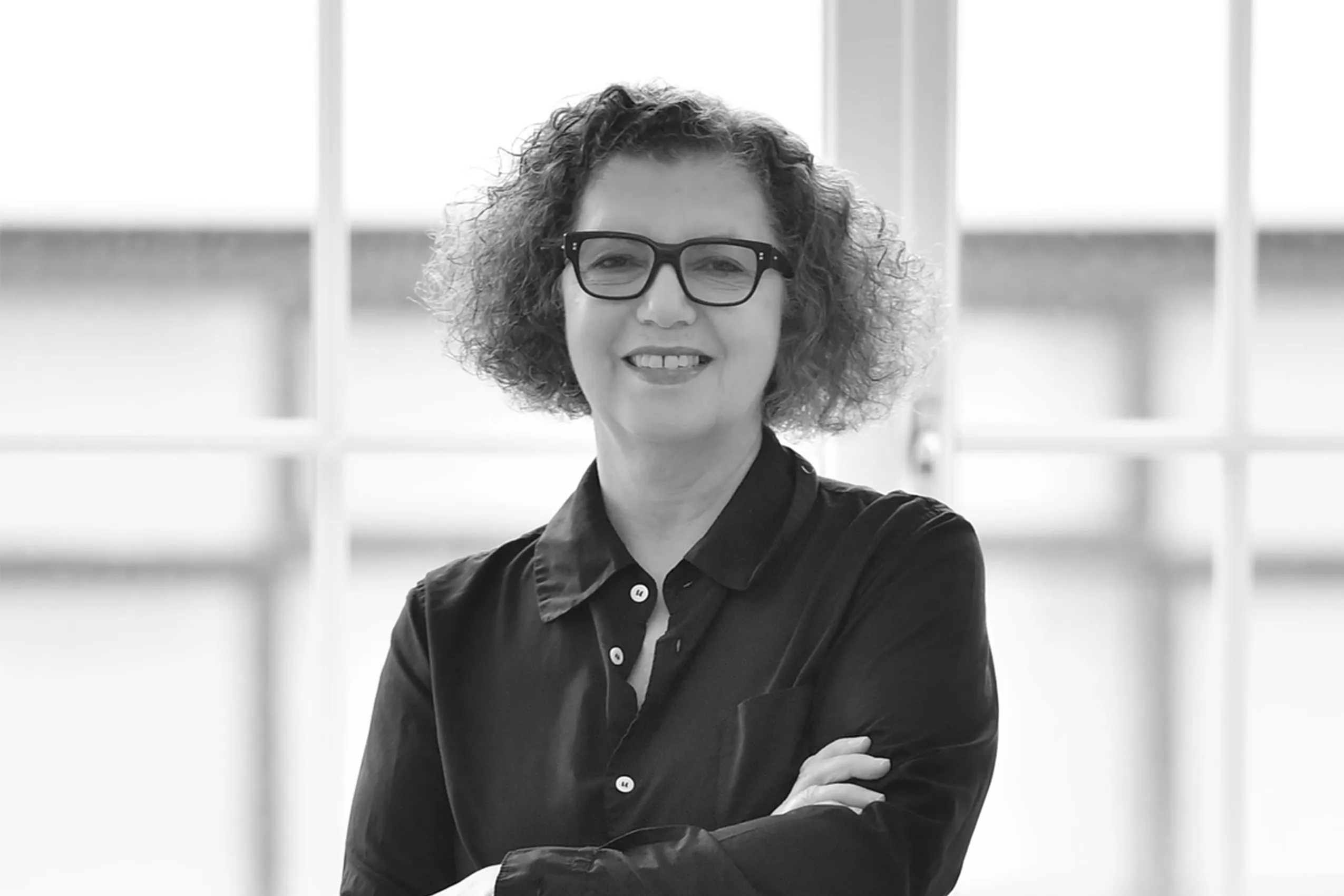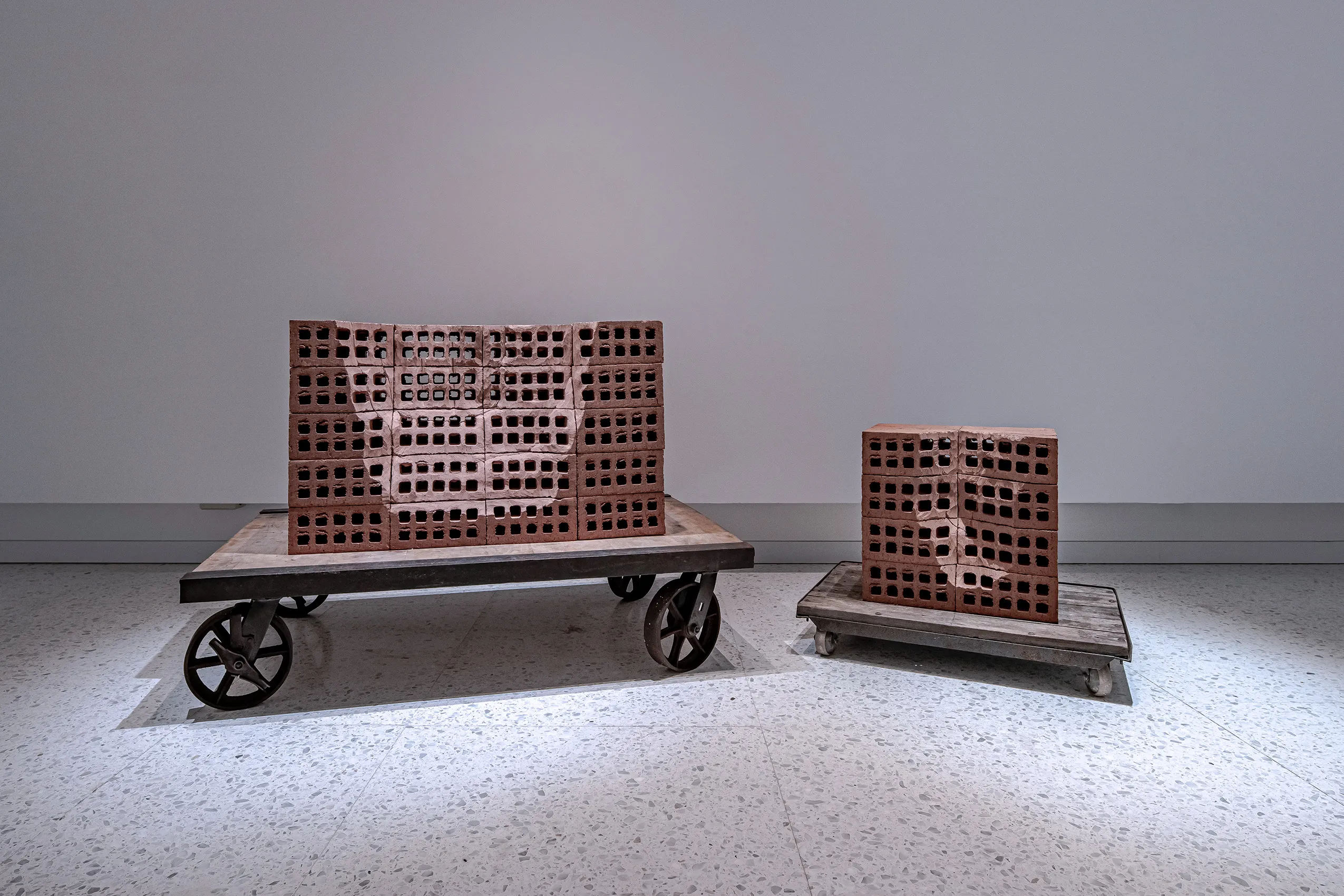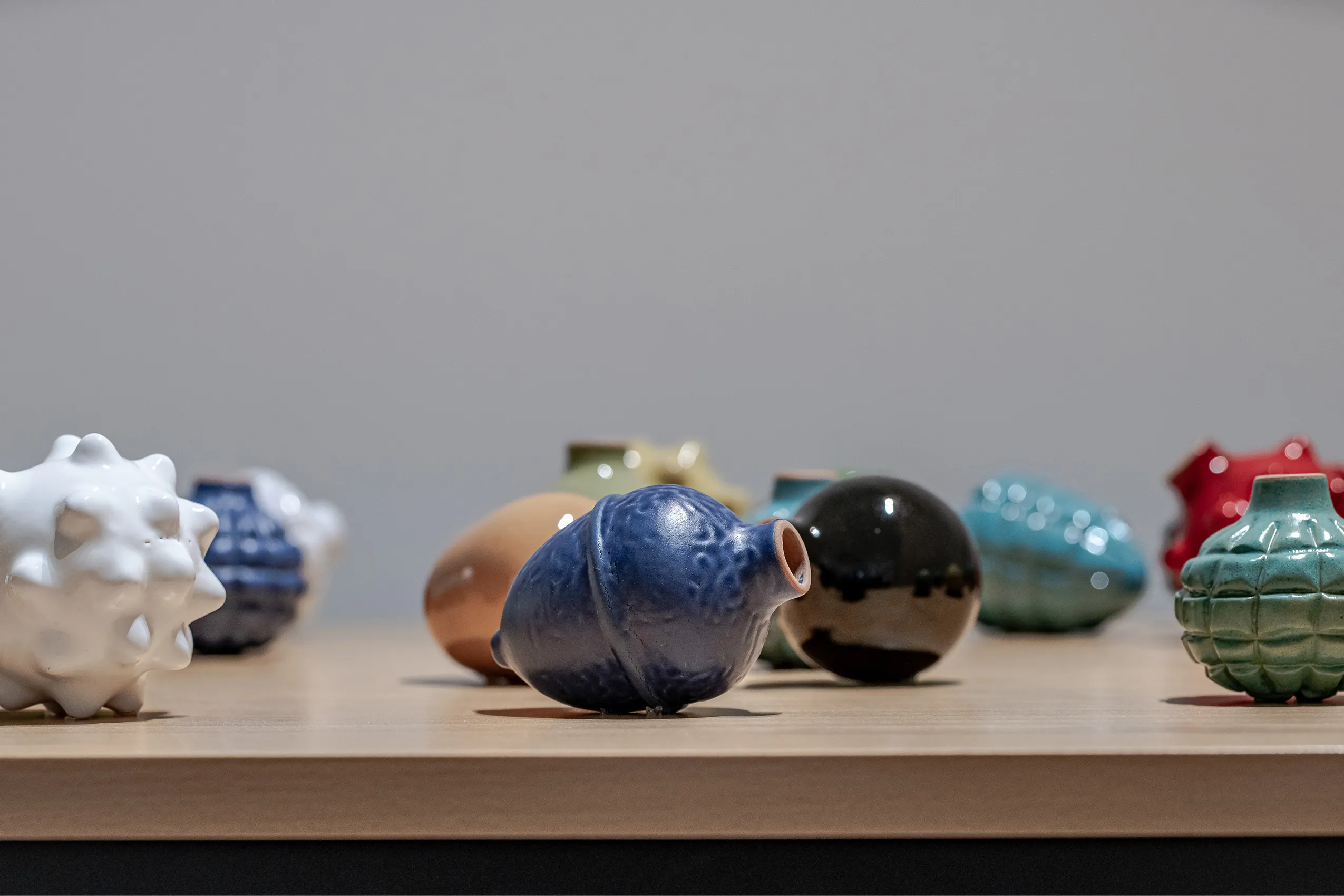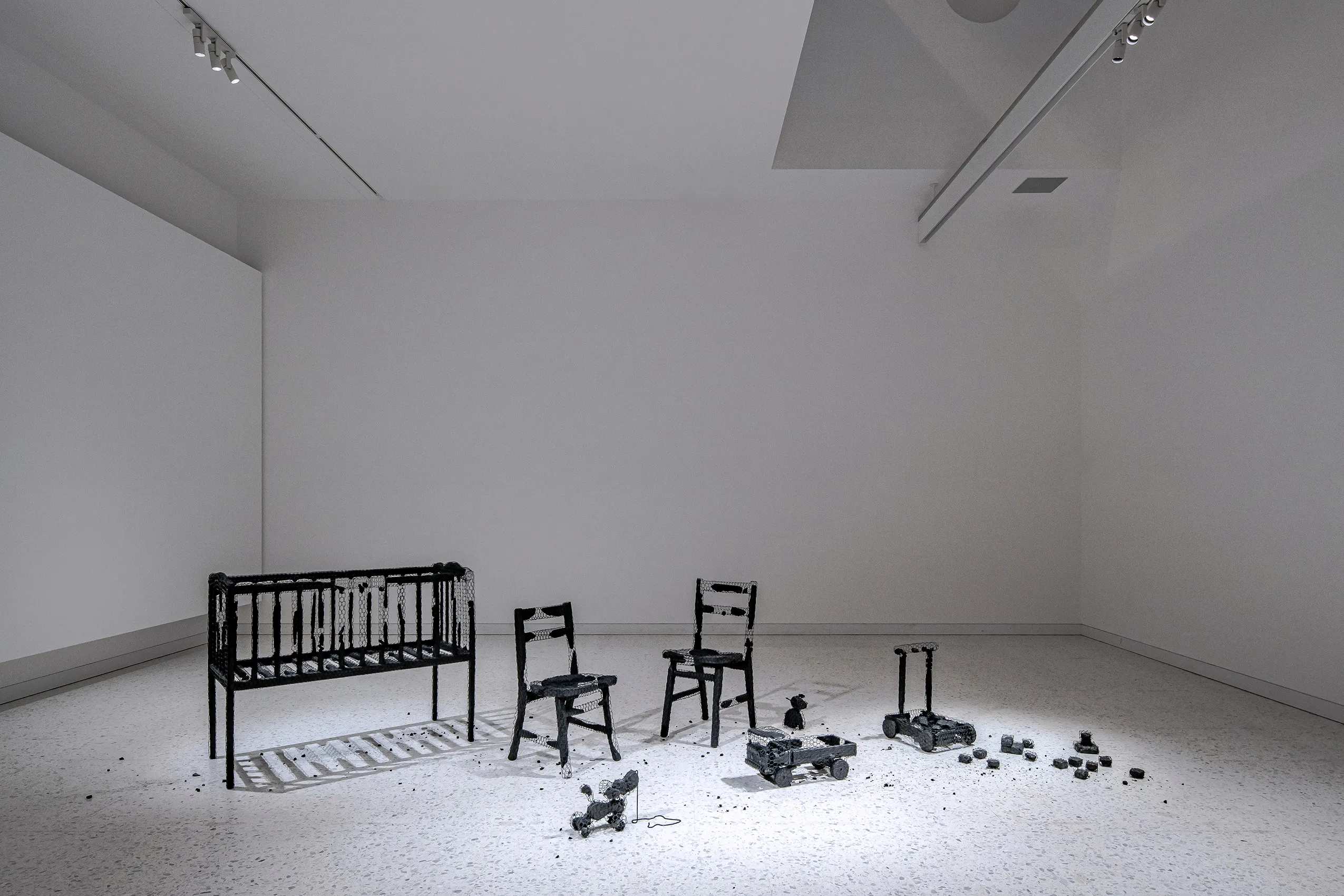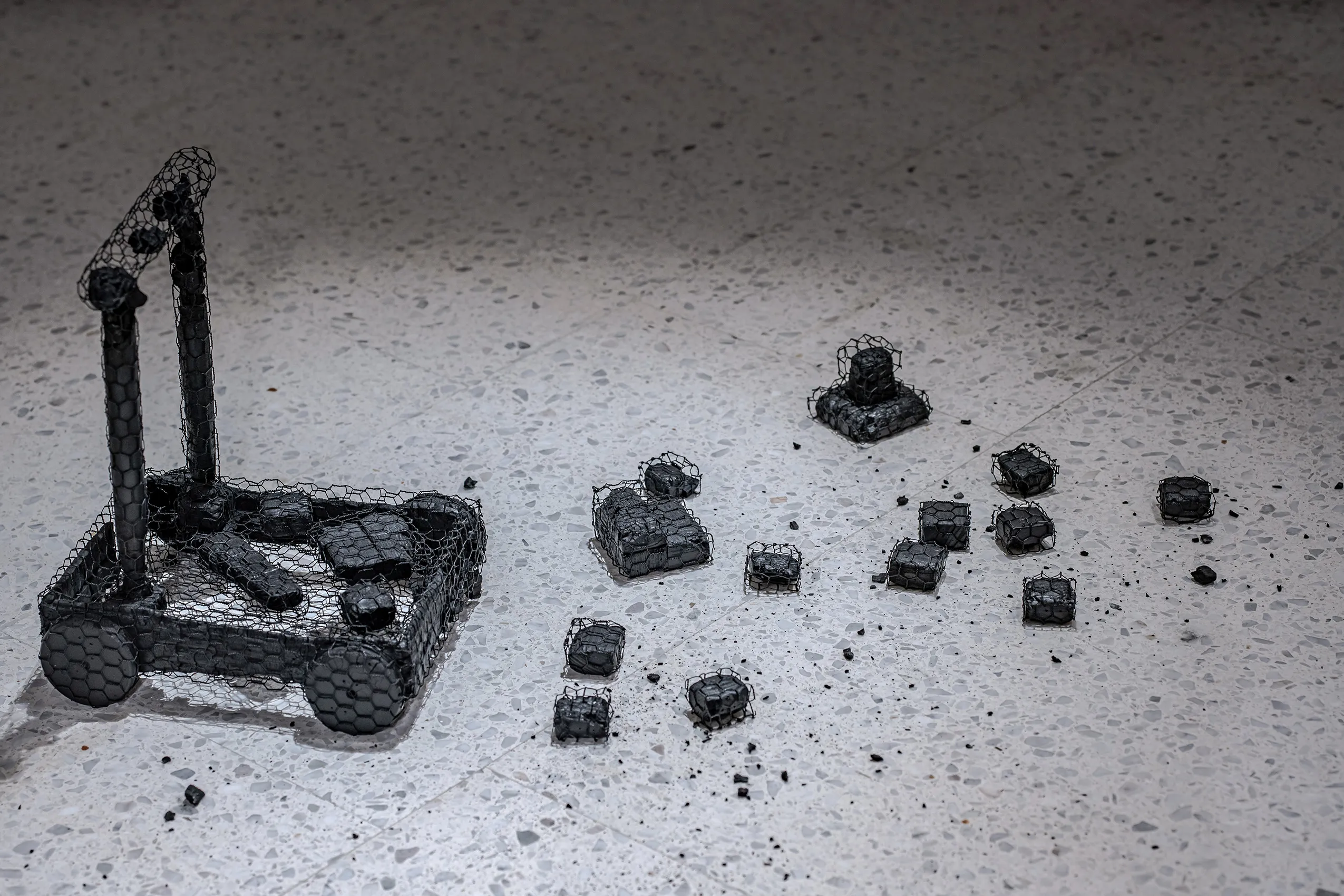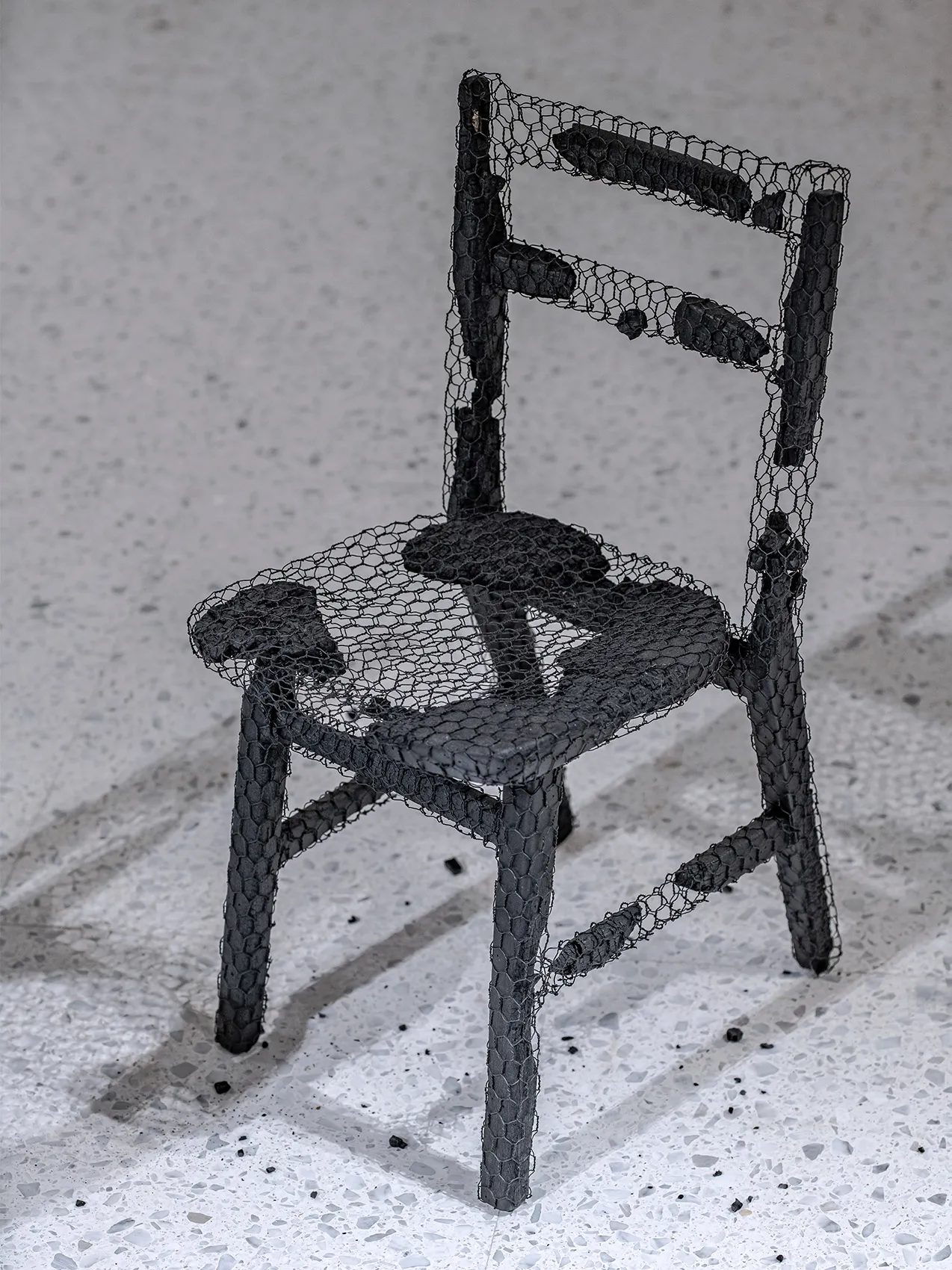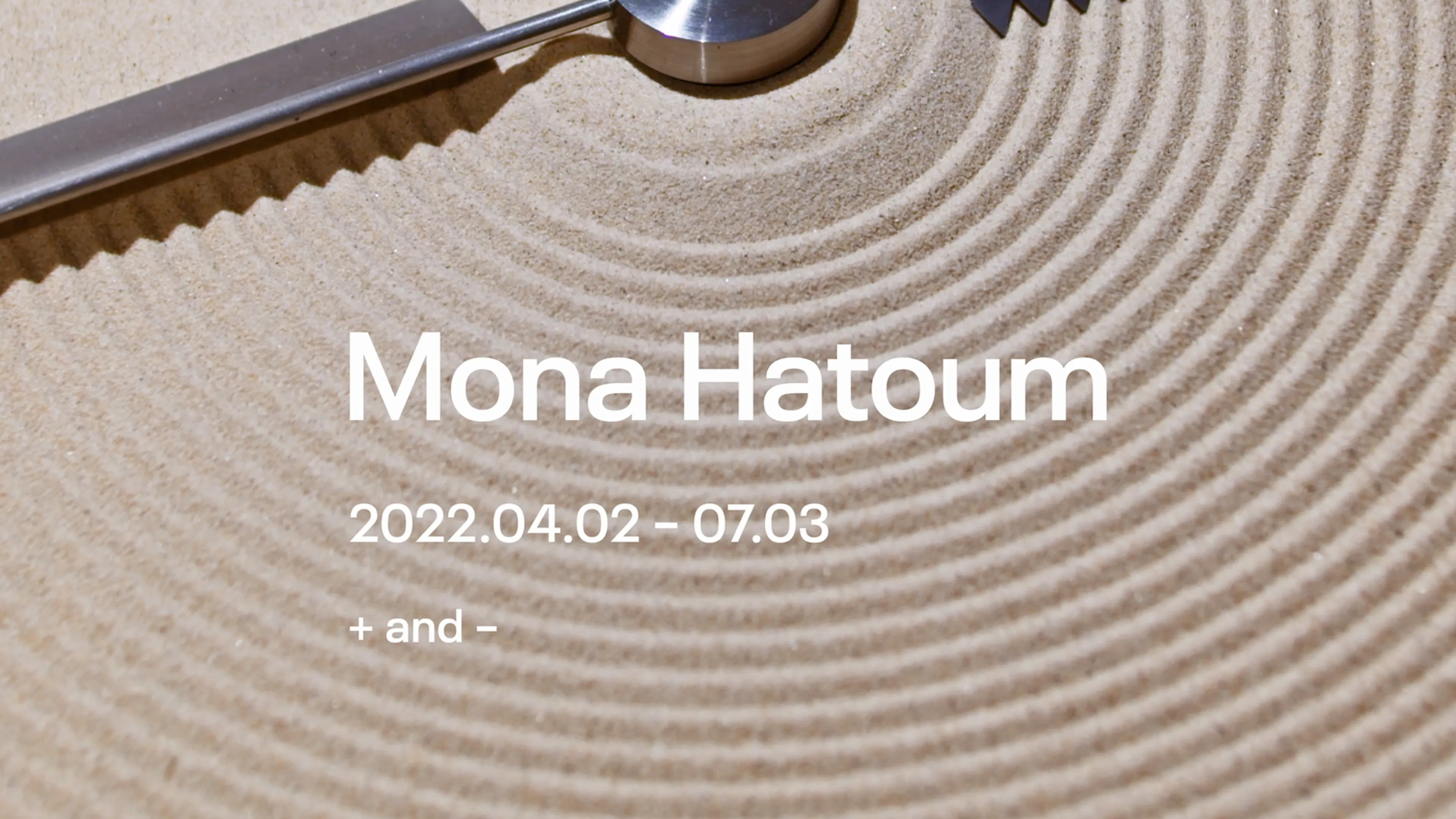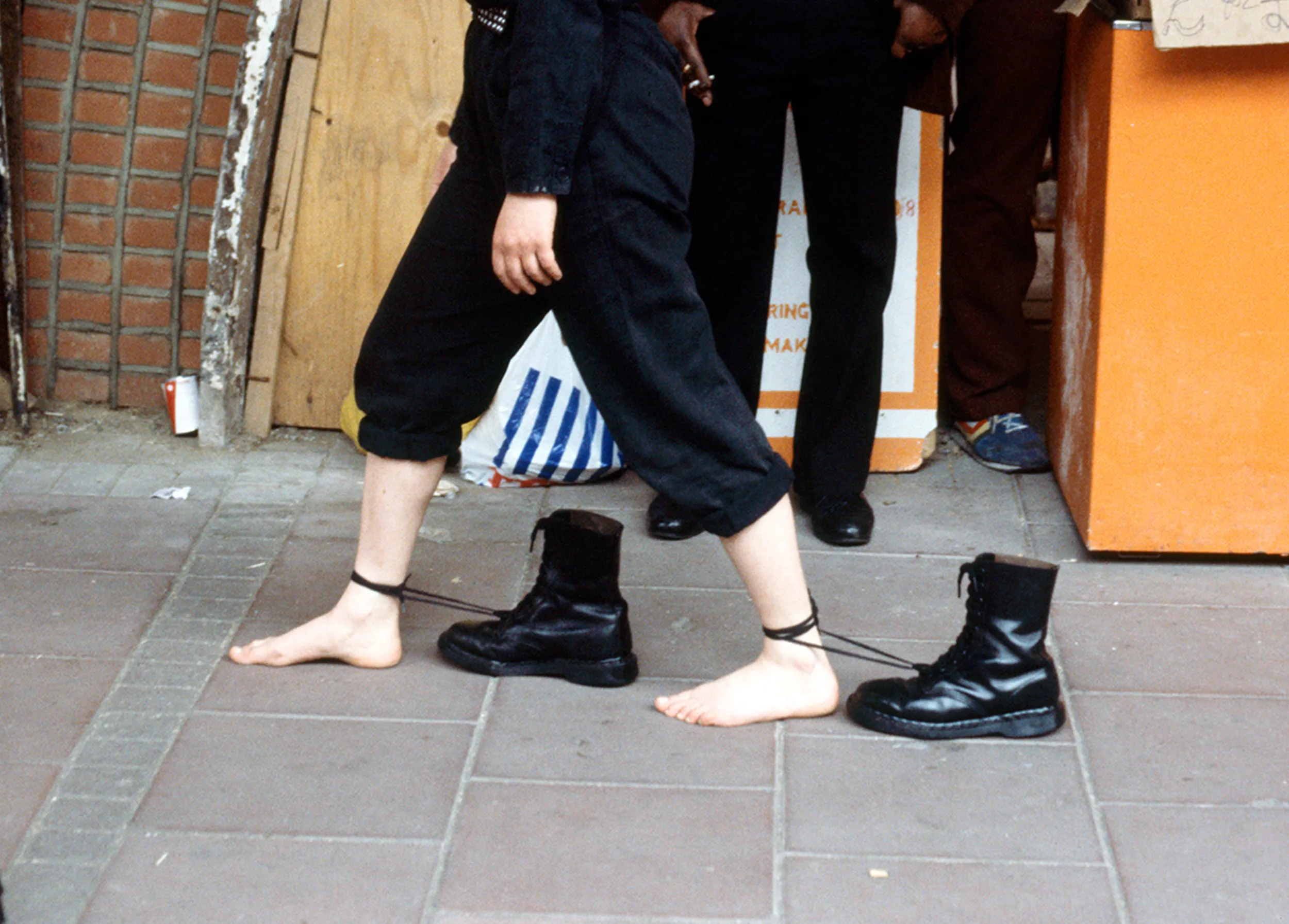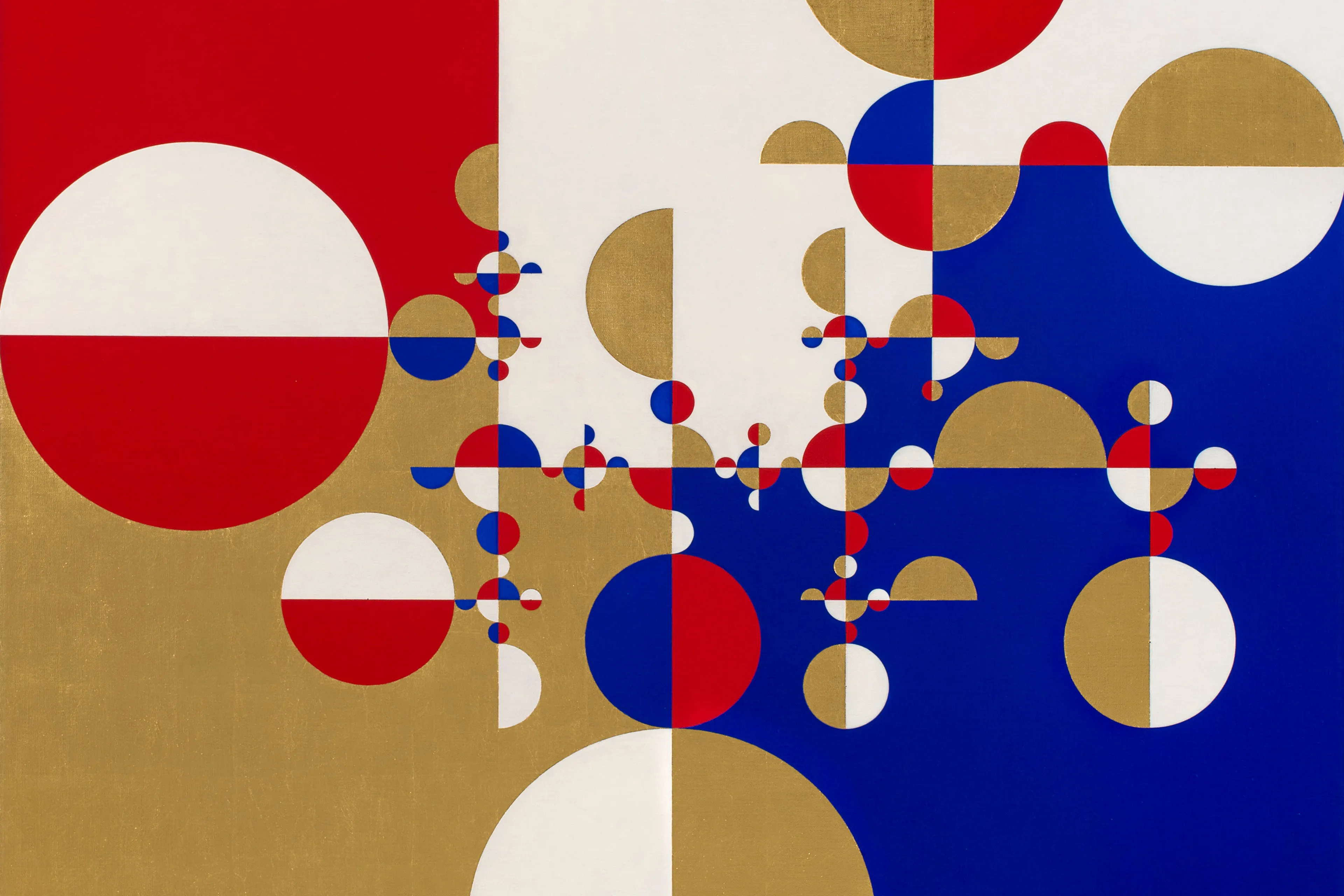
MONA HATOUM:+ and -
Locations
WINSING ART PLACE
“I was trying to make something which would merge with its surroundings, something beautiful and ethereal which would be both there and not there. But it became frightening. Now I realize that these kind of paradoxes were just what I was looking for.” — Mona Hatoum
In 2022, the world is still in turmoil, with nations and people unable to reach consensus over conflicting interests such as territory, borders or religion, choosing instead to go to war. The war between Russia and Ukraine, which broke out at the end of February this year, has once again raised fears, with its images of artillery fire and smoke broadcast daily on news channels all across the world. Many families have been forced to leave their homes and have become displaced, and the conflict has caused political and economic turmoil worldwide. It is hard to imagine cities and towns, normally peaceful and quiet, reduced to ruins overnight. This tense, uncertain condition is a theme that runs throughout the work of Mona Hatoum, the subject of this exhibition; an artist who reflects on the state of our current global situation.
Hatoum was born in 1952 to a Palestinian family in Beirut. During a visit to London in 1975, The Lebanese Civil War broke out, preventing her from returning and resulting in her living and working for the most part in the UK from that period onwards. Experiencing the cultural shock of a new, foreign country, Hatoum began to feel out of place, and was compelled to re-examine her position as an "outsider".
Hatoum's works often draw on her personal experience, while alluding to broader issues of rootlessness, alienation and social unrest. With reference to both minimalism and conceptual art, she frequently transforms familiar objects such as chairs, cribs and kitchen utensils into unfamiliar, dangerous and even threatening objects, juxtaposing conflicting emotions of desire and repulsion, fascination and fear to challenge the viewer's perception. "Cappello per due", for example, which is in essence a wry comment on the idealized state of coexistence, seamlessly transforms a familiar object – a straw hat – into a hat for two, uncanny in its subtle, formal alteration.
This exhibition features several of Hatoum's major works. The sculpture "+ and -", evokes contradictory forces through the continuous mechanical process of inscribing and erasing a series of lines into a circular bed of sand. Two versions of the work "A Pile of Bricks" are also on display. Comprising a stack of red bricks, dented and concave, piled up on a wooden builder's trolley, they recall the damaged buildings and bombed out structures of war-torn cities and the instability of life in conflict while at the same time, the potential for rebuilding and reconstruction. Hatoum's skill at altering the definition and appearance of everyday items is exemplified in "Still Life", in which bright, harmless ceramic objects, on closer inspection reveal forms resembling hand grenades. Galzed in an array of alluring colors, the threat of violence and destruction that the grenades embody, here remains embedded within their shiny, sugar-colored surface. In "Remains (play space)", an ensemble of domestic furniture is burnt and destroyed, now just a fragile tracery of delicate wire mesh and shattered charcoal pieces. Subverting the understanding of 'home' as a place of comfort and security, the installation evokes deep trauma, as if a scene of sudden abandonment resonant with war, exile and the loss of homeland.
Since 1979, Hatoum has been exploring a number of dangerous experimental sculptures using electrical currents that run through a series of lightbulbs or through strings of metal household utensils. During the 1980s, she became well known for her video and performance works, utilizing the body as a vehicle for political and personal expression. Hatoum once said, "I have always been dissatisfied with work that just appeals to your intellect and does not actually involve you in a physical way. For me the embodiment of an artwork is within the physical realm; the body is the axis of our perceptions, so how can art afford not to take that as a starting point?" Focusing on issues of the body and surveillance, "Look No Body!" examines the relationship between physical behavior and society by featuring the artist drinking water and then urinating in a nearby toilet, filmed by a surveillance camera above. The artist has also filmed her own body inside and out, using endoscopic cameras, presenting its orifices and surfaces as abstract entities to confront the taboos of the body that exist in life and society.
"The Light at the End", created in 1989 was Hatoum's first installation with light, drawing the viewer through a confined tunnel-like space towards a glowing, red-hot gate-like structure at its end. Tempting the viewer to navigate the space, despite its potential threat, the installation, which uses bars of heating elements, points to themes of imprisonment, torture and temptation all at the same time.
